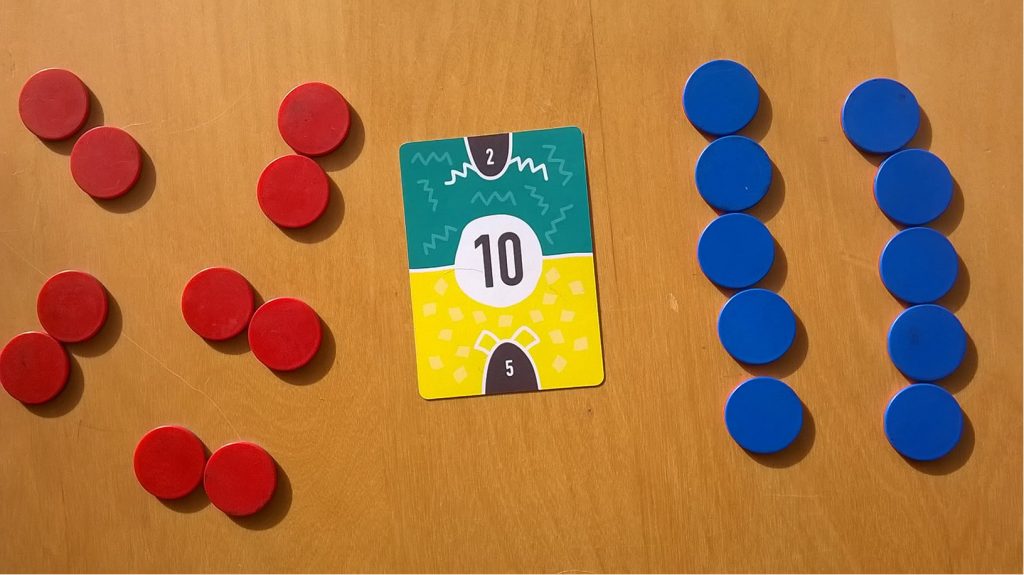Forget Grouping and Sharing. Please!
I did my PGCE with the legendary Jill Mansergh as my maths tutor (yes, I can still say my 17x table!). Even the brilliant Jill could not help me overcome my disquiet around the words “grouping” and “sharing”. I am 100% confident about what they mean now, but for about 10 years after my PGCE something was bothering me which I could not put my finger on.
These days, I work with teachers as well as students, and it is clear there are loads of teachers who share the disquiet I felt. They do not feel confident about identifying whether a question is about “grouping” or “sharing”, and when faced with a division equation, few can confidently verbalise it as both a sharing and a grouping model. This confusion and lack of confidence are inevitably passed on to students.
I am a good mathematician, proud of my A level, and primary school division should not be hard. So, what was the issue for all those years?
It turns out it wasn’t maths; it was simply a language barrier.
I know and viscerally understand that when you divide you start with a whole and you end up with parts.
There are two things to know about the parts:
(i) how many parts
(ii) the size of each part
That is it. That’s division in a nutshell.
Let’s look at an example.
10 ÷ 5 = 2
This equation tells us that we have a whole worth 10. There is no ambiguity there. But how many parts are there? And how big are the parts?
The equation could mean that there are 5 parts, and each part is worth 2. Or, equally, it could mean that we are splitting the whole into parts worth 5 and there would be 2 parts.
If a child (or indeed a teacher!) can look at a division equation and can understand, and, critically, can also represent and verbalise both scenarios then they have understood what are conventionally called the “grouping” and “sharing” models. Whether a child (or indeed a teacher!) can correctly label one as “grouping” and the other as “sharing” is unimportant, and in no way contributes to their mathematical understanding. It is a layer of linguistic complexity which is unnecessary and for most confusing.
I am good with words. Normally I don’t have trouble remembering the labels for things. I can name shapes, remember formulas, recite 10 digits for Pi. So, I have spent many years feeling inadequate but also curious about why I couldn’t easily label a simple division problem as “grouping” or “sharing”.
And then the penny dropped. The ambiguity lies not in the maths but with the labels.
Consider how we can use the word share.
- I can share 10 into 5 groups
- I can share 10 into groups of 5
Both sentences are linguistically clear.
In the world of primary school maths, things are less clear: in sentence one, when I share, I am indeed “sharing” but in sentence two, when I “share”, it turns out, I’m “grouping”.
It’s linguistic hell!
Now let’s look at the use of the word group.
I can group 10 into 5 groups of 2.
This makes complete grammatical sense, but if you create 5 groups and allocate the 10 counters into these 5 groups, then in the world of primary maths, the action isn’t “grouping” at all, it’s “sharing”.
So, the reason that the labels “grouping” and “sharing” don’t work for so many teachers and students is because our normal use of the verbs “group” and “share” don’t map to the specific usage in primary maths of “grouping” and “sharing”; indeed sometimes our normal use of the verbs “group” and “share” can contradict the specific mathematical intent.
So, for reasons which I hope are now obvious, I hugely prefer the use of the terms, “partitive” and “quotitive” division. These lack the linguistic ambiguity of “sharing” and “grouping. That said, for most primary teachers these are also unnecessary labels which won’t add value to their understanding or classroom teaching. (They are useful labels in CPD materials.) Teachers just need to be clear that there are two different division models, they should be able to explain both models for any division equation and have strategies for teaching both models.
So here is my radical suggestion: let’s recognise the confusion which the terms “grouping” and “sharing” create. Let’s ditch these unhelpful labels and instead direct our effort towards making sure that every teacher and every child understands that there are two approaches to decomposing a whole into equal parts. Let’s practise decomposing the whole using both methods – one method where we know how many parts there are but not the size of the part, and one where we know the size of the part but we don’t know how many parts there are. Let’s talk about what we are doing in full sentences as we move manipulatives around, let’s talk about what we know and what we are trying to find out, let’s keep our focus on the three key elements of division.
If, faced with the equation 10 ÷ 5 = 2, every teacher and every child could confidently explain that if we start off with 10
- we can split 10 into 5 equal groups of 2
OR
- we can split 10 into groups of 5 and there will be 2 groups
then we would have achieved a great deal without ever having to talk about “grouping” or “sharing”.

Focussing on the key structures within division rather than on labels would simplify division and make it less feared by teachers and students. And that would be a very good thing.
So, at the risk of sounding like a complete hypocrite, please share this blog with any groups you are in.
